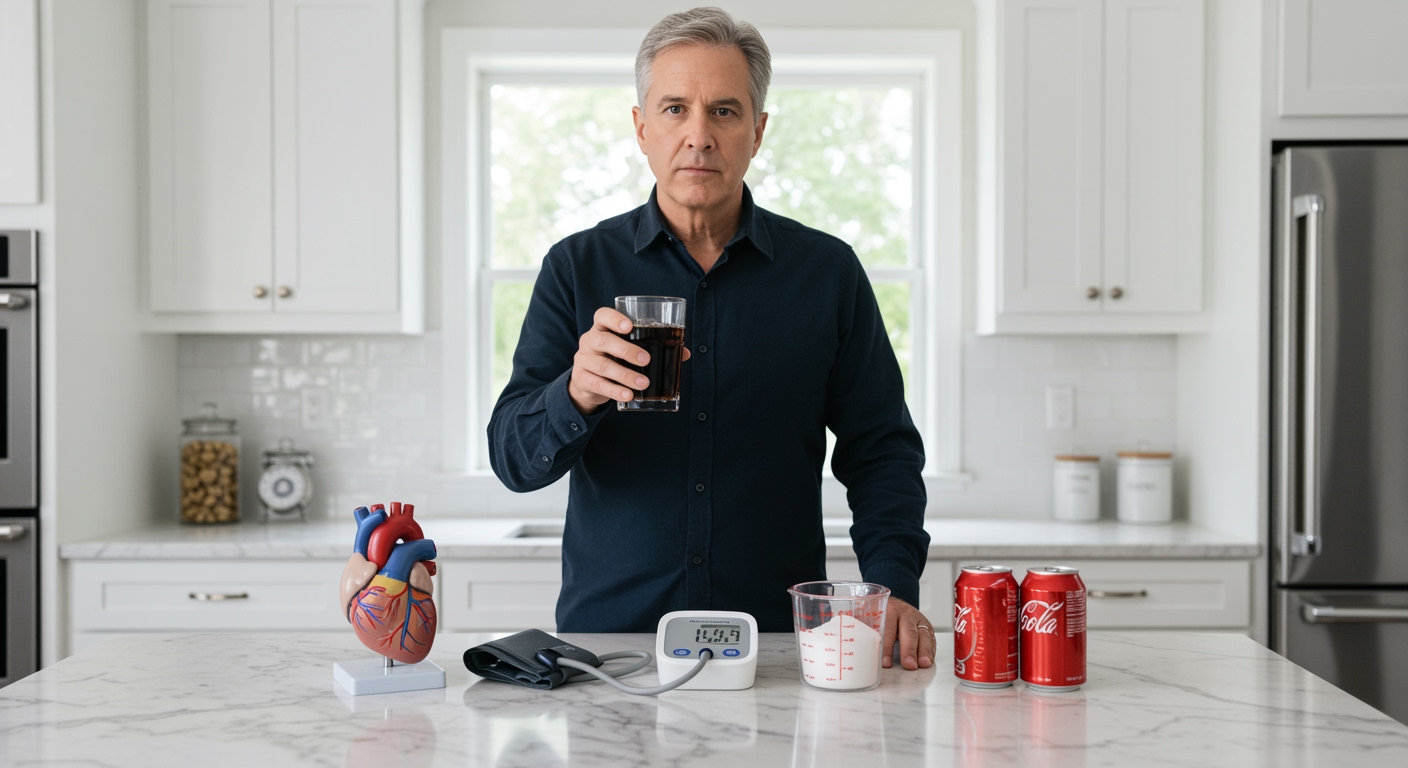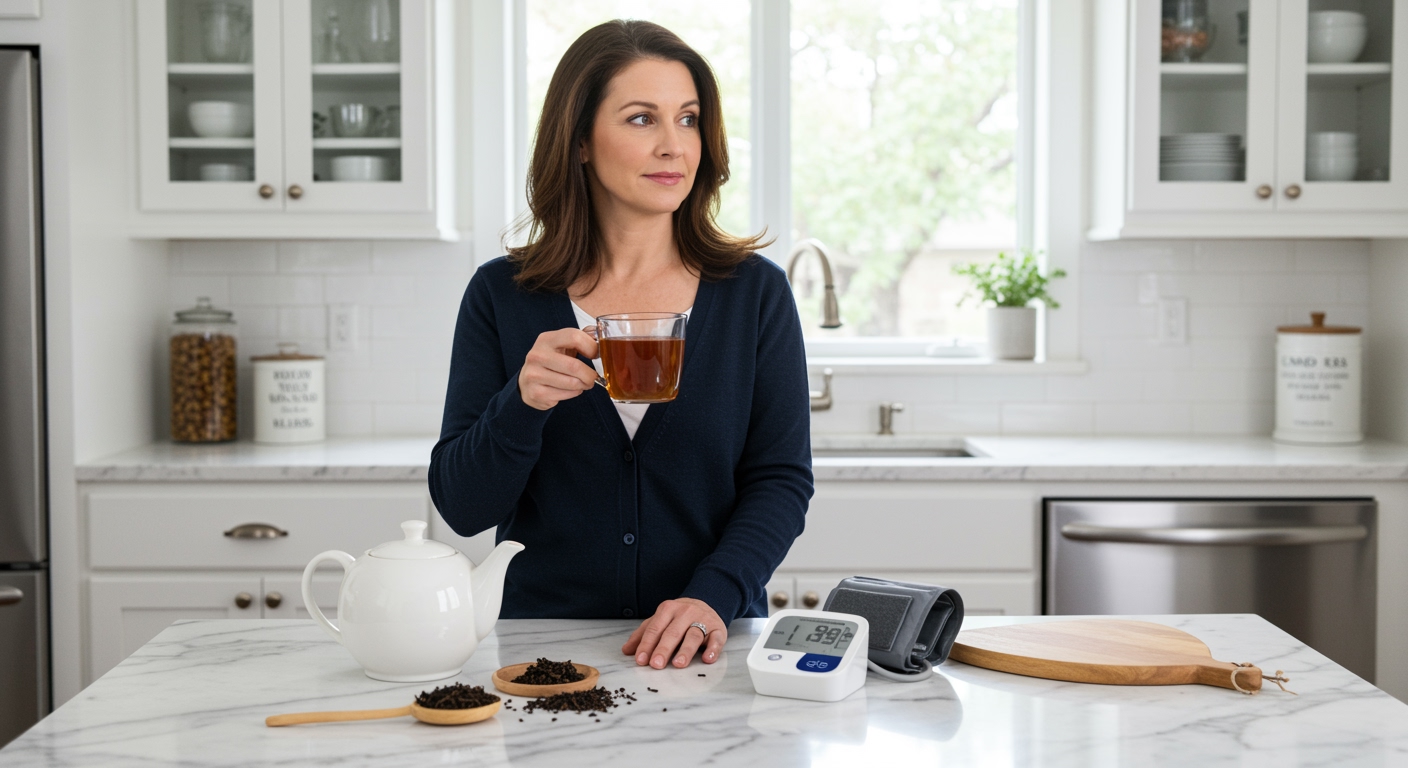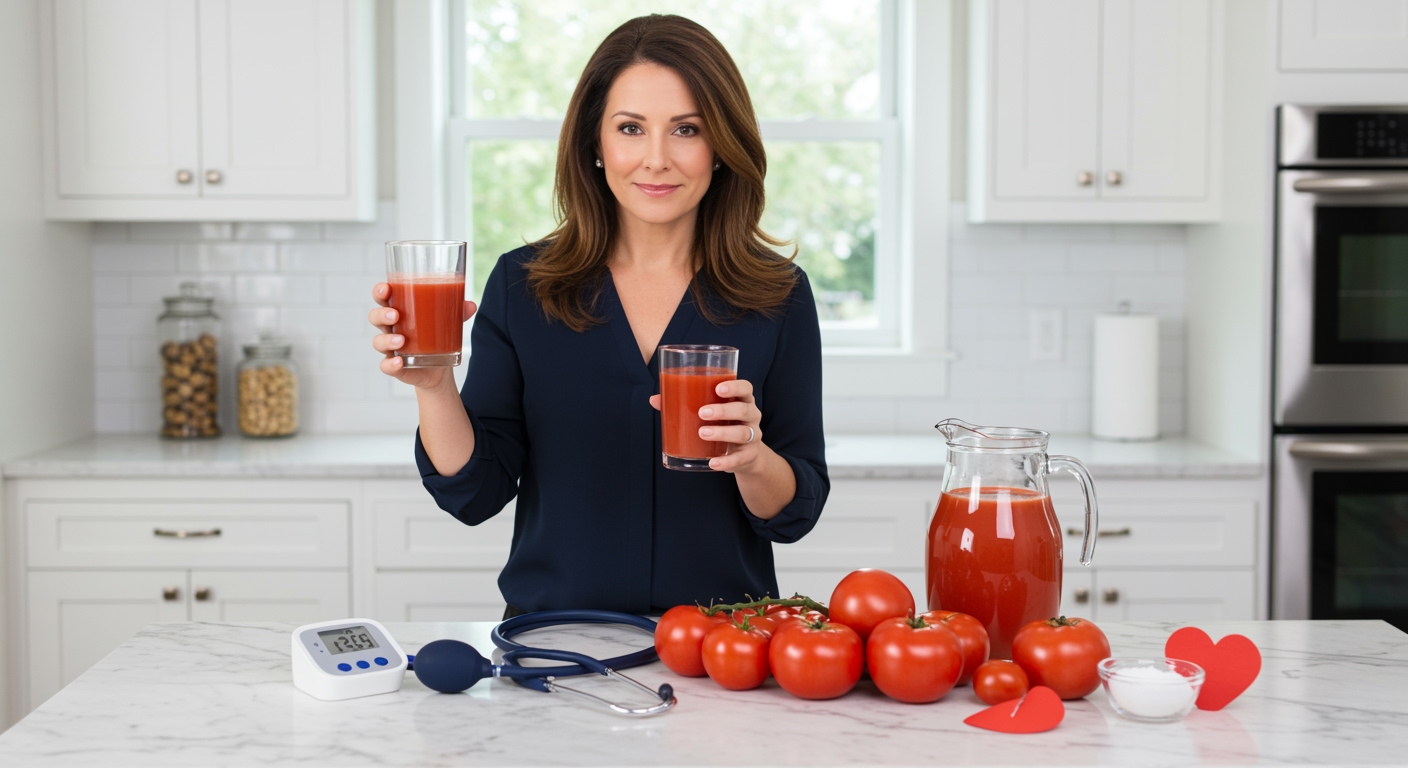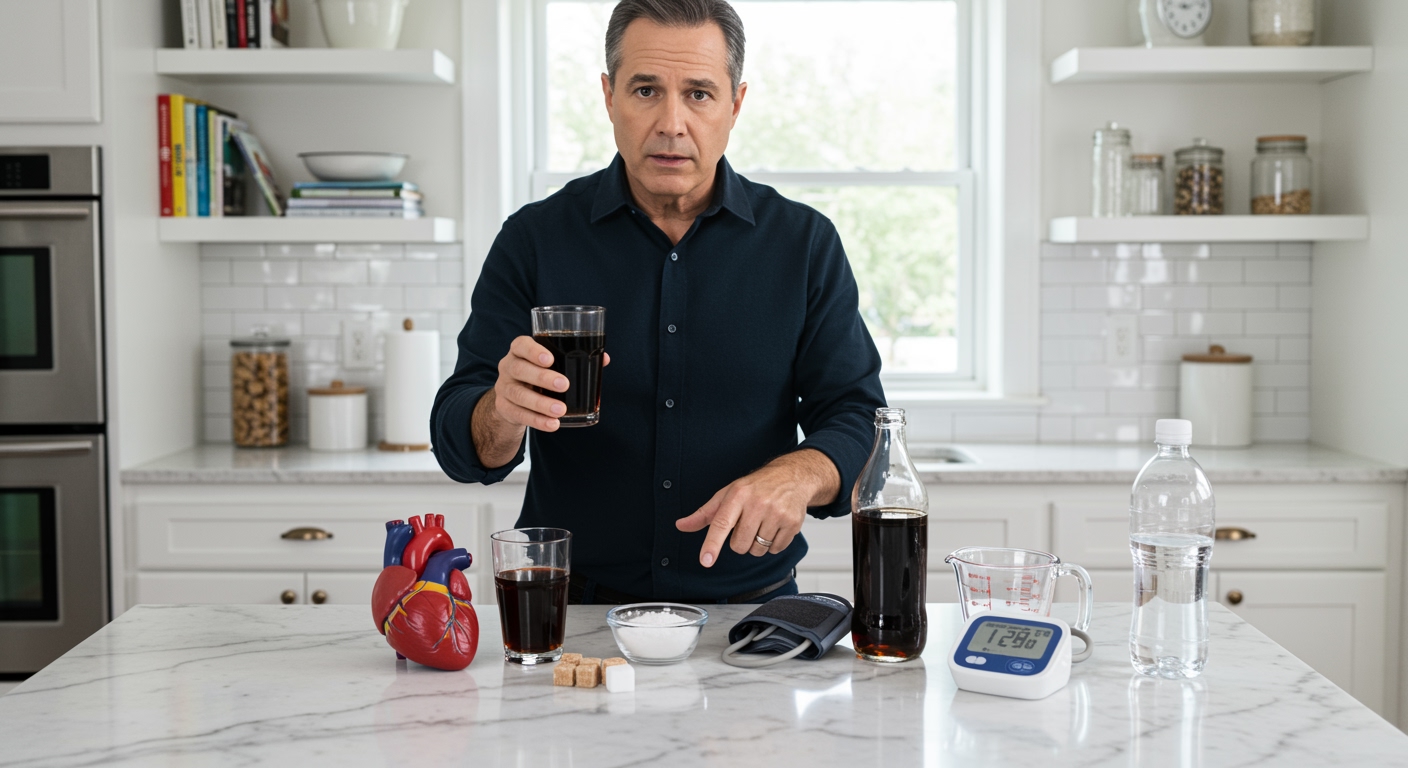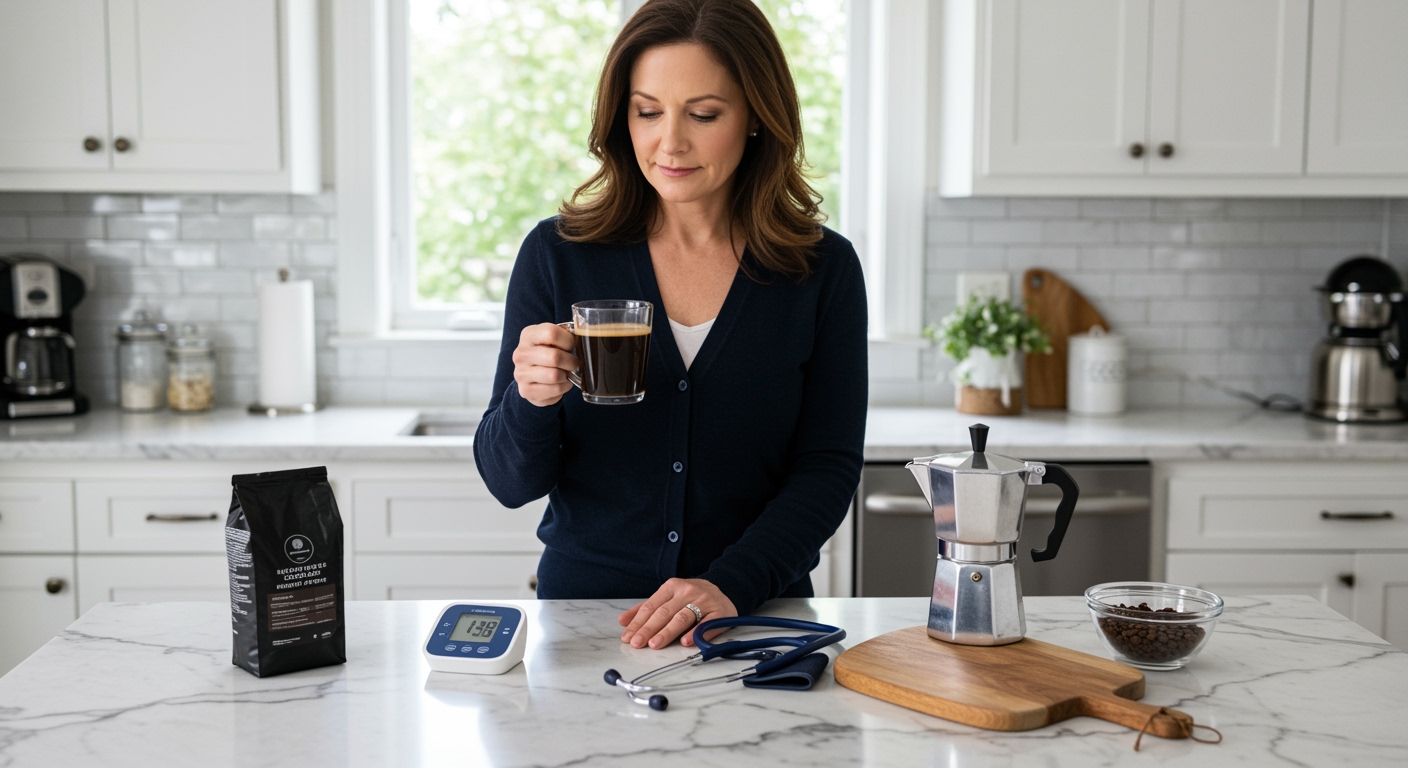✪ Key Takeaway: Regular soda consumption can raise blood pressure through sugar spikes, sodium content, and weight gain mechanisms.
Introduction
Your doctor tells you to cut salt, but nobody mentions the can of soda you drink every afternoon.
You might be wondering if that daily soda habit is secretly sabotaging your blood pressure goals while you focus on avoiding the salt shaker.
Hi, I am Abdur, your nutrition coach and today I am going to explain exactly how soda affects your blood pressure and what you can do about it.
How Does Sugar in Soda Affect Blood Pressure?
A single can of regular soda contains about 39 grams of sugar, which equals roughly 10 teaspoons.
When you drink this much sugar at once, your blood glucose levels spike rapidly.
Your pancreas responds by releasing a large amount of insulin to handle this sugar flood.
High insulin levels trigger your kidneys to retain more sodium and water, which increases blood volume.
More blood volume means your heart must work harder to pump blood through your arteries.
This extra workload creates higher pressure against your artery walls, raising your blood pressure readings.
Research shows that people who drink one or more sugary drinks daily have a 12% higher risk of developing high blood pressure compared to those who avoid them.
✪ Fact: Your blood pressure can rise within 30 minutes of drinking a sugary soda due to rapid insulin response.
What About the Sodium Content in Soda?
Most people think soda is just sugar and water, but many varieties contain surprising amounts of sodium.
A 12-ounce can of regular cola contains about 45 milligrams of sodium.
Diet sodas often contain even more sodium, with some varieties packing up to 70 milligrams per can.
Sodium makes your body hold onto extra water, increasing the total volume of fluid in your bloodstream.
Your heart must pump this extra fluid through the same network of blood vessels, creating higher pressure readings.
If you drink multiple sodas throughout the day, this sodium adds up quickly and compounds the blood pressure effect.
The combination of sugar and sodium in regular soda creates a double impact on your cardiovascular system.
✪ Pro Tip: Check nutrition labels because some sodas contain more sodium than others, especially diet versions.
Does Diet Soda Impact Blood Pressure Differently?
Diet soda eliminates the sugar problem but introduces different concerns for your blood pressure.
Artificial sweeteners like aspartame and sucralose do not cause the same insulin spike as regular sugar.
However, diet sodas typically contain more sodium than regular versions to enhance flavor.
Some studies suggest that people who drink diet soda regularly have higher rates of metabolic syndrome, which includes high blood pressure.
The exact mechanism is not fully understood, but researchers believe artificial sweeteners may disrupt normal glucose metabolism.
Diet soda drinkers also tend to have other lifestyle factors that contribute to high blood pressure, making it difficult to isolate the direct effect.
While diet soda may be better than regular soda for blood pressure, water remains the healthiest choice for optimal cardiovascular health.
✪ Note: Diet soda may be less harmful than regular soda, but it is not completely neutral for blood pressure.
How Does Soda Contribute to Weight Gain and Blood Pressure?
Regular soda consumption leads to weight gain through several mechanisms that directly impact blood pressure.
Liquid calories from soda do not trigger the same satiety signals as solid food, so you do not feel full after drinking them.
This means you consume the soda calories on top of your regular meals, creating a caloric surplus.
Each extra pound of body weight requires your heart to pump blood through additional miles of blood vessels.
Excess weight also increases insulin resistance, which promotes sodium retention and raises blood pressure.
Belly fat, which soda consumption particularly promotes, releases inflammatory compounds that damage blood vessel walls.
Studies show that losing just 5-10 pounds can significantly lower blood pressure readings in overweight individuals.
✪ Fact: One daily soda can lead to 15 pounds of weight gain per year if calories are not compensated elsewhere.
What Are Better Alternatives to Soda for Blood Pressure?
Water should be your primary beverage choice for optimal blood pressure control.
Plain water helps your kidneys flush excess sodium from your system and maintains proper blood volume.
If you crave flavor, try adding fresh lemon, lime, or cucumber slices to your water.
Unsweetened herbal teas provide variety without the sugar, sodium, or artificial additives found in commercial sodas.
Sparkling water with a splash of 100% fruit juice gives you the fizz sensation with much less sugar.
Green tea contains compounds that may actually help lower blood pressure when consumed regularly.
If you must have soda occasionally, limit yourself to one small can per week and choose versions with the lowest sodium content.
✪ Pro Tip: Gradually reduce soda intake over 2-3 weeks to avoid cravings and make the transition sustainable.
The Bottom Line
Soda consumption clearly contributes to high blood pressure through multiple pathways including sugar spikes, sodium content, and weight gain.
Your beverage choices are just as important as your food choices when it comes to blood pressure control.
I would love to hear about your experience with reducing soda intake or any questions you have about managing blood pressure through nutrition in the comments below.
References
At NutritionCrown, we use quality and credible sources to ensure our content is accurate and trustworthy. Below are the sources referenced in creating this article:
